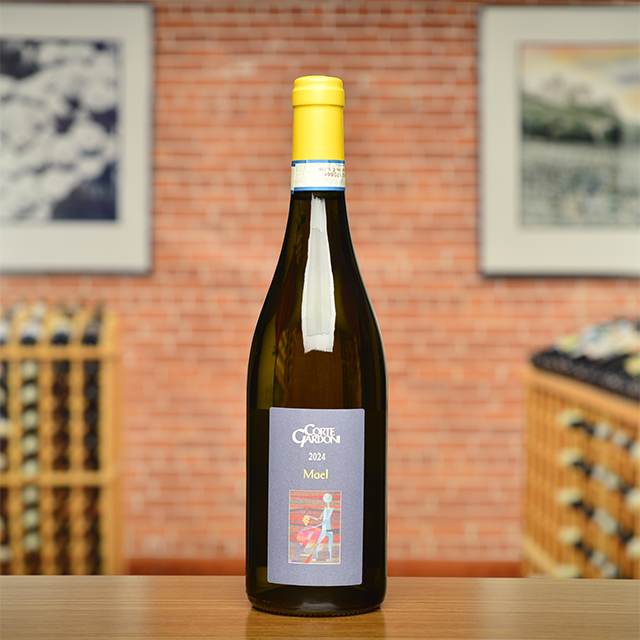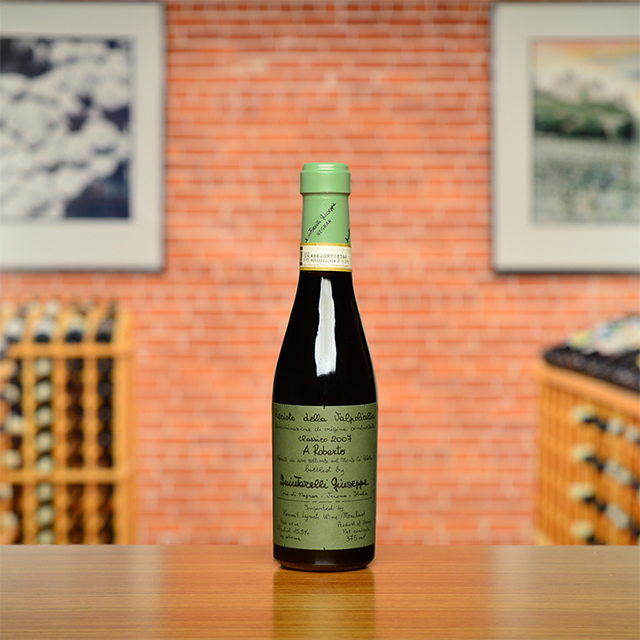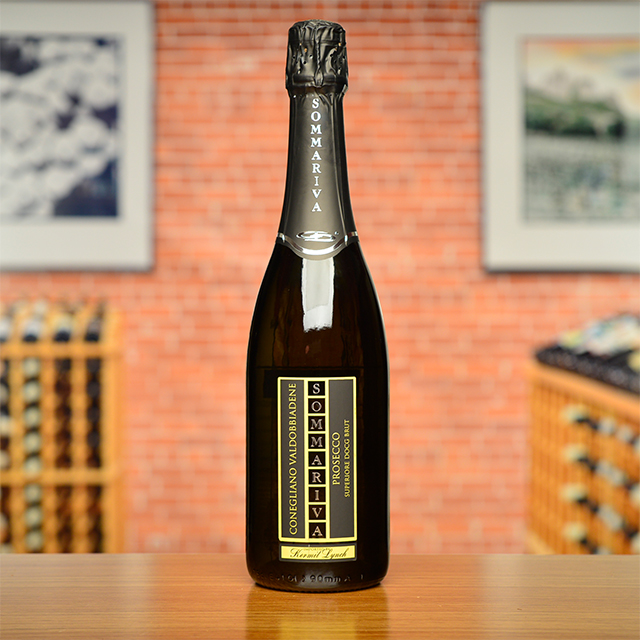Notify me
Sparking Rosato for Anytime, Anywhere Quaffing
Sparking Rosato for Anytime, Anywhere Quaffing
by Anthony Lynch by Anthony Lynch
Rosato Spumante Brut “Il Rosa”
Rosato Spumante Brut “Il Rosa”

Sommariva Italy | Veneto
Enjoying a bottle of wine sometimes seems like a mysterious art form. Temperature, glassware, pairing? To decant or not to decant? Was it aged properly? Were the production methods ethically acceptable? Will today’s atmospheric pressure, biodynamic forces, and planetary alignment allow my wine to shine?
Fortunately, this pink sparkler from Prosecco queen Cinzia Sommariva evades the need for such philosophical musings. From one of KLWM’s most consistent and reliable growers, this bottling has much in common with Sommariva’s standard Prosecco: liveliness, grace, charm, and real class. What differentiates it is its enchanting perfume of candied little berries and tart, mouthwatering finish accented by the most delicate sparkle. Spotlighting the local Raboso grape with an elegant splash of Pinot Nero, its seductive aromatics, low alcohol content, and piquant dry finish will have you stocking up for anytime, anywhere quaffing.
More from this Producer or Region

2023 Prosecco Treviso Sui Lieviti
Italy | Veneto
This brisk, fizzy, stony nectar has an undeniable gift for bestowing unparalleled palate stimulation and mental reinvigoration.

2016 Alzero Cabernet
Italy | Veneto
Fresh and vibrant, bursting with every imaginable fruit, ripe off the tree.

2017 Alzero Cabernet
Italy | Veneto
Fresh and vibrant, bursting with every imaginable fruit, ripe off the tree.

2024 Bianco di Custoza “Mael”
Italy | Veneto
November Adventures Club ~ A masterful blend of Garganega, Trebbiano, Trebbianello, and Riesling, this perfumed charmer punches far above its weight.

Prosecco Superiore Brut Magnum
Italy | Veneto
Sommariva’s Prosecco is an obvious choice when looking for a wine for a celebration, or simply to enliven the senses.

2007 Recioto della Valpolicella Classico HALF BOTTLE
Italy | Veneto
Enjoy this decadent treat—a combination of powerful structure and tender elegance—before a roaring fire on a chilly winter evening.

Prosecco Superiore Brut
Italy | Veneto
With its light and elegant notes of citrus and orchard fruit, this is one of the stand-out, exquisitely crafted wines of this region.

2024 Gambellara Classico “El Gian”
Italy | Veneto
Volcanic soils confer mouthwatering salinity to the Garganega grape in this racy, textured white.

Rosato Spumante Brut “Il Rosa”
Italy | Veneto
A spritzy rosato with scents of frutti di bosco and wildflowers.

2024 Custoza “Greoto”
Italy | Veneto
A dry white with an intriguing aroma. You can drink it in good-sized swallows while floating on an inner tube.
About The Producer
Sommariva
About The Region
Veneto

Italy’s most prolific wine region by volume, the Veneto is the source of some of the country’s most notorious plonk: you’ll find oceans of insipid Pinot Grigo, thin Bardolino, and, of course, the ubiquitous Prosecco. And yet, the Veneto produces the highest proportion of DOC wine of any Italian region: home to prestigious appellations like Valpolicella, Amarone, and Soave, it is capable of excelling in all three colors, with equally great potential in the bubbly and dessert departments.
With almost 200,000 acres planted, the Veneto has a wealth of terroirs split between the Po Valley and the foothills of the Alps. While the rich soils of the flatlands are conducive to mechanization, high yields, and mass production of bulk wine, the areas to the north offer a fresher climate and a diversity of poor soil types, ideal for food-friendly wines that show a sense of place. Whether it’s a charming Prosecco Superiore from the Glera grape, a stony Soave or Gambellara from Garganega, or a Corvina-based red in any style, the Veneto’s indigenous grape varieties show real character when worked via traditional production methods.
Since his first visit in 1979, Kermit has regularly returned to the Veneto to enjoy its richness of fine wines and local cuisine. Our collaboration with Corte Gardoni, our longest-running Italian import, is a testament to this. The proximity of beautiful cities like Verona and Venice, with their deep culinary heritage, certainly doesn’t hurt, either.
More from Veneto or Italy
2023 Gambellara Classico “El Gian”
Davide Vignato Italy | Veneto
2023 Colli Trevigiani Manzoni Bianco
Gregoletto Italy | Veneto
2023 Prosecco Treviso Sui Lieviti
Gregoletto Italy | Veneto
Vino Spumante “Cuvée dei Vignato”
Davide Vignato Italy | Veneto
2024 Gambellara Classico “El Gian”
Davide Vignato Italy | Veneto
2018 Valpolicella Classico Superiore
Giuseppe Quintarelli Italy | Veneto
Prosecco Superiore Brut Magnum
Sommariva Italy | Veneto
2015 Recioto della Valpolicella Classico HALF BOTTLE
Giuseppe Quintarelli Italy | Veneto
2018 Amarone della Valpolicella Classico
Giuseppe Quintarelli Italy | Veneto
2024 Bardolino “Le Fontane”
Corte Gardoni Italy | Veneto
2008 Rosso Cà del Merlo
Giuseppe Quintarelli Italy | Veneto
Prosecco Superiore Brut
Sommariva Italy | Veneto
2023 Gambellara Classico “El Gian”
Davide Vignato Italy | Veneto
2023 Colli Trevigiani Manzoni Bianco
Gregoletto Italy | Veneto
2023 Prosecco Treviso Sui Lieviti
Gregoletto Italy | Veneto
Vino Spumante “Cuvée dei Vignato”
Davide Vignato Italy | Veneto
2024 Gambellara Classico “El Gian”
Davide Vignato Italy | Veneto
2018 Valpolicella Classico Superiore
Giuseppe Quintarelli Italy | Veneto
Prosecco Superiore Brut Magnum
Sommariva Italy | Veneto
2015 Recioto della Valpolicella Classico HALF BOTTLE
Giuseppe Quintarelli Italy | Veneto
2018 Amarone della Valpolicella Classico
Giuseppe Quintarelli Italy | Veneto
2024 Bardolino “Le Fontane”
Corte Gardoni Italy | Veneto
2008 Rosso Cà del Merlo
Giuseppe Quintarelli Italy | Veneto
Prosecco Superiore Brut
Sommariva Italy | Veneto
Kermit once said...

Kermit once said...
If you're looking for value, look where no one else is looking.
Inspiring Thirst, page 211
















